In the spring, the desert air is bittersweet — a swirl of aromas from ethereal blooms with a bite of alkaline dust. The emotions are bittersweet as well. There are so many memories, stretching as far back as my earliest recognitions. Awe meets an abiding fear of this hostile landscape. The joy of discovery walks in tandem with the sadness of loss. Change happens rapidly in the desert through violent wind and erosion, yet the stillness feels eternal. Immersed in this terrifying beauty, I drift to the center of the sphere where the love that becomes grief becomes love again.
I didn’t think I’d make it out to Canyonlands this year. My spring calendar was overly full, and then I injured my shin. I tried to convince myself there was no real need to make this happen every spring. Needles was my dad’s tradition before it became mine. For more than two decades, Dad traveled to this remote section of a bare-bones national park to camp and hike. Occasionally, when I could carve out the time, he invited me.
Dad was a man of routine. Our first trip together happened 20 years before the last, and even small details remained unchanged. He’d schedule a three-day weekend in late April, which he shifted to mid-week after he retired, for fewer crowds (not that a park where the nearest town is 75 miles away is ever truly crowded). He’d pack his small two-wheel-drive vehicle with the same springbar canvas tent, the same stack of cheap upholstery foam pads, the same flannel sleeping bag, the same water thermos he received as a wedding gift in 1977, the same wicker picnic basket, and increasingly large coolers where he could store enough ice to keep his milk cold and his Gatorade frozen for four days. He’d drive to his favorite dispersed camping site outside the national park near Hamburger Rock — increasingly hard to snag in later years — and set up camp before continuing into the park to hike 10 miles to the overlook of the Green and Colorado River confluence and back. Day two featured a long loop of many of the “crowd pleasers” of the park, including Druid Arch and his beloved Chesler Park. On day three, he hiked 11 miles along the rugged Peekaboo Trail to the pictographs and back before driving home.
Snacks were mostly limited to pita bread with Nutella, granola bars, and Dad’s specialized trail mix of 50% regular M&Ms and 50% peanuts. No raisins. Dad hated raisins. I once asked Dad why he didn’t just buy peanut M&Ms, and he reasoned that the mix tasted so much better this way. (Plus, I think it was cheaper to buy these ingredients in bulk.) Dinners were always the same. The one I remember was a can of Dinty Moore beef stew with a sleeve of crackers. When I joined him, it was still just one can of stew, which he shared. After Dad went to bed, I hid in the car and scarfed M&M mix because I was starving.
Dad always brought a solar camp shower that he’d spend at least an hour roping up in a cottonwood tree behind discreetly positioned boulders. He shaved and combed his hair every morning. In all of the 41 years I had with him, I can’t say I ever saw him in any state but clean-shaven with neatly combed hair. After camping in the desert for two or three nights, my hair would be a windblown rats’ nest, and my skin would be smeared in a red paste of sunscreen and sand. But Dad always looked like he was on his way to church in cargo shorts.
Once, in a year that seemed far too late for such technology to still be available — 2018 — Dad brought a portable DVD player and a library copy of the documentary film “Meru.” Dad loved climbing films. He plugged the player into the cigarette lighter of his 2002 Toyota Camry, and we sat in the car to watch the movie together. Occasionally, I’d look out the window at the perfect night sky, of the stars upon stars, and back at Dad’s face watching the tiny screen intently. I love this memory. It’s one of my favorites.
These are the memories I carry with me in 2025, like pockets of helium to buoy the otherwise crushing weight of a backpack with 31 miles’ worth of snacks and seven liters of water, as I set out through the deep sand and quicksand mud of Salt Creek Wash.
It was the last gift Dad gave me — a respite from myself. Although I didn’t recognize this at the time, the pandemic hit my mental health like a sack of bricks. What had been a mild propensity toward social paranoia and agoraphobia turned into a clinical condition. I didn’t know where to put all of this new anxiety, so I turned to flogging myself with endurance efforts, as though I were a sinner paying penance. A story that best describes the fanaticism I cultivated during the Year of Our Plague 2020 happened on December 21, when I decided to give the year meaning by spending the Winter Solstice riding my bike 160 miles through the snow-choked mountains. Just after sunset, I crested the high point of my ride at 11,000 feet, where the temperature was barely above 0F, and plunged 4,000 feet toward the town of Idaho Springs. The windchill was so severe that breathing caused a continuous ice cream headache. The entirety of both arms and legs went numb. I felt like I was actively dying and consoled myself with the promise that when I reached the only gas station left on my purposefully remote route, I would go inside and buy a hot coffee. I salivated at this thought. I had barely been inside a business in eight months, but this was an important concession.
I reached the gas station and parked my bike along a chain link fence on the outskirts. As I hobbled toward the door, a Greyhound Bus pulled into the parking lot. At least two dozen passengers streamed out of the bus and into the bright, warm building. I could see the burgeoning crowds through the windows. All of those bodies moving, breathing, brushing against each other. I stood dazed, blinking, and finally letting a couple of tears fall down my frozen cheeks. And then I turned dejectedly back toward my bike, straddled the saddle with my numb legs, and continued pedaling into the frozen night.
This is how I went into 2021 — believing my asthmatic autoimmune body was destined to die of the plague, and my only hope for avoiding my fate was to play a childhood game similar to “The People Are Lava.” Dad was similarly cautious and didn’t initially invite me on his April Canyonlands trip. But then the vaccines became available in March, and this provided hope. Beat and I got our second shots the day before we left for Utah. We were both still suffering from side effects as we drove to Moab to meet Dad. I can still feel the way my feverish body stiffened as Dad walked toward me. I hadn’t hugged another person besides Beat in months, the last being my Dad when my family traveled to Boulder for our small mountaintop wedding ceremony in September 2020. But hugging still felt uniquely dangerous.
Four years later, my brain plays the memory of this hug on loop. It wasn’t the last hug Dad and I shared. But in many ways it feels like the first, like we were meeting each other as a parent and daughter renewed. I was beginning to make peace with my anxiety, the existential despair that opened the wound, and the self-flagellation that cauterized it briefly, only to open more raw and painful wounds. Canyonlands was the beginning of my path to healing. It was Beat’s first time visiting the park. He reacted to the unique landscape like a boy in an amusement park, running ahead, excited to see what was around the next bend. Dad was the wise sage who knew every turn of the crooked and convoluted path. In the evening, we went home to the windblown tents and solar shower. The nights felt real. They felt normal.
But the true gift Dad gave me in April 2021 was a couple of off-handed remarks at specific and memorable spots along the trails. His favorite spots.
“When I go, this is where I want you to spread my ashes.”
I reached Dad’s crest of the Peekaboo Trail just after 9 a.m. Friday. The morning clouds were beginning to clear, giving way to an unseasonably hot day. I squinted toward the horizon with the La Sal Mountains and Sixshooter Peaks, two landmarks Dad loved to point out. I knelt to run my fingertips along the smooth sandstone where I had watched flecks of him sparkle in the sunlight before tumbling toward the green cottonwoods below. Just as I stood, a blast of wind hit me broadside and nearly knocked me over.
“You sure did pick a windy spot to spend eternity,” I said out loud as I knelt back down to gain my bearings. “But I suppose you can’t have it another way up here. You did love a view.”
It was strange to be at Dad’s spot and not feel like crying. Instead, I was having a pleasant morning, hiking with my dad. The experience was exactly that, although it sounds trite when I try to explain it using words. I hadn’t seen another human in two hours, but I wasn’t alone.
The feeling followed me as I stood and continued walking along the Peekaboo Trail, which is less of a trail and more of a suggestion tracing the sandstone fins that jut out of crooked canyons. Rising over this mess of geology is a boulder balanced on a crumbling sandstone platform that Dad called “The Sentinel.” When he pointed out his spot on the Peekaboo Trail, he said he wanted to “Be here, beside The Sentinel.” I replied, “Dad, you’re going to outlast that rock.”
Now, I can’t help but keep my eyes fixed on The Sentinel, as though waiting for it to fall. As fragile as the boulder looks, I understand it might not crumble for another thousand years. Yet, it could fall today. Such is the impermanence of desert geology. Such is the impermanence of all things, energy that can not be created or destroyed, only changed. In that way, are my seven billion billion billion atoms all that different from the particles of Dad that drifted away from this place to become billions of new things? This is how I think of Dad now, as being everywhere. But in a way that feels more tangible, he is a still-whole entity that resides here.
And what an interesting place to reside. Canyonlands is an environment no modern human can survive for long without outside supplies, where gravity keeps us anchored and convoluted geology locks us out, where the summer heat beats down with agonizing ferocity, yet the winters are still long and cold. It’s hard to be a human here. But what would it be like to be a ghost? I smiled at the thought of floating effortlessly along the forbidding cliffs, drifting in and out of alcoves, flying high above the sandstone ripple like the flightseeing tours Dad used to love. Even if I don’t believe in ghosts, here I kind of do. Maybe it’s because I can feel Dad walking beside me, and it feels like more than free-floating particles, and even when I tell myself it’s just memories and ashes, my brain asks, “Okay, but what then?”
Dad’s second spot is in Chesler Park, in a wash my sisters, Mom, Beat, and I chose when we traveled here together to spread his ashes in 2022. Dad loved Chesler Park and wanted to be “anywhere in here.” I pointed out a spot in a wash between two large juniper trees because it was memorable and also environmentally responsible. In washes, particles blow in with the wind and are washed away without impacting the local biome. Ashes are meant to be just that, scattered. I reminded myself that nothing we left here remains.
And yet. Twice when I revisited this spot — in 2023 and again this year — I’ve found a lone western wallflower growing from the sand where we left Dad. It grows alone, in the middle of a gully where rain frequently washes away the surface sand, making it almost impossible to take root. This flower seems particularly out of place this spring, as it’s been so hot and dry in southern Utah. Few pools remain in the washes. Even in shaded alcoves, wildflowers are sparse. This rogue wallflower is a tangible anomaly and feels meaningful, more than my imagined particles and ghosts. I knelt in the sand and let myself cry. I cried for the future Dad and I will never share. But more than that, I cried for the beauty that goes on.
After 15 minutes or so, I pulled myself together and stood. Sitting quietly with ghosts has never been in my family’s DNA. True to Homer form, I was on a tight schedule to hit up all of Dad’s “crowd pleasers” in the two days I had to spend in Needles. I meandered through Wooden Shoe Canyon, visited Druid Arch, skirted through the shoulder-squeezing slot canyon of the Joint Trail, rock-hopped beside the hoodoos of Devil’s Kitchen, and returned via an interminable connector trail that scrambled up and over endless rock outcroppings.
Toward the end of my 31-mile day, my water supply was drained, my snacks were inedible, my backpack was light, but my legs were hopelessly heavy as I hoisted my exhausted body up enormous step-ups and into stiff squats. I am admittedly a “cruiser trail” zone-out-and-go sort of person, yet there isn’t a single mile in Needles that isn’t maddeningly tricky or technical. Even a minute of inattention sent me wandering off route toward the cliffs. Dad loved the puzzle, and I, in turn, have learned to love it. But after 30+ miles, I began to hate it. I indulged in a few explicatives when I had to lower my stiff legs down yet another rocky terrace.
As I shuffled exhausted along a slickrock shelf, racing sunset and the darkness that was sure to leave me befuddled and lost, I heard footsteps. I turned to greet the only human I’d seen in a couple of hours, but nobody was there. When I resumed walking, the footsteps returned. Again, it was nobody. I shivered with that primal recognition of something paranormal that I know is just the machinations of an exhausted and emotionally fragile brain. And yet. I found comfort in my imaginary companion.
“Thanks, Dad. It’s been a great day.”
I was tired, and you’d think I’d be capable of leaving it be with one great day in the desert. But no. No, I am my father’s daughter. On Saturday morning, I was back at it, trekking through deep sand toward the more remote corners of the park. I wanted to visit the sheer cliffs where the Green and Colorado Rivers meet, one of Dad’s favorite overlooks. If my shin still felt okay, I intended to drop down Red Lake Canyon. The rugged trail cuts through rare weaknesses in the strata, allowing a non-climber to access the water. But the route is far from anything. Even Dad only went there a couple of times because it made for such a long, hard day.
When I reached the overlook, the morning was already brutally hot — cloudless with temperatures climbing into the upper 80s. It’s one thing to endure the menacing sun after weeks of acclimation, but I’m only just emerging from a long winter and a cool spring. A month ago, my body was still primed for battling subzero temperatures in Fairbanks, Alaska. I do not have the conditioning for summer.
I again started the day with seven liters of water and one of my best sun hoodies — like wearing shade. But I was already dehydrated from the previous day and neglected some of the smaller necessities, like regularly ingesting electrolytes and reapplying sunscreen. I was setting myself up to fail. Even though I sort of knew I was making bad decisions, that didn’t stop me from crossing miles of thorny tumbleweeds through Cyclone Canyon into an increasingly strong wind. This remote corridor connects the Confluence Overlook with Red Lake Canyon.
The thorns of Cyclone Canyon devoured my legs, leaving them raw and bleeding. Two hours for a mere four miles of technical descending, I reached the Colorado River. There, I removed my shoes and socks and waded into the murky water. The shore was lined with quicksand, and I had to walk fast to avoid sinking below my ankles. The wading felt great, but I emerged coated in mud. The cement-like clay solidified on my skin and was difficult to remove, even after scrubbing with Wet Wipes and an extra pair of socks. This vigorous scrubbing probably removed the last of my sunscreen, and I only haphazardly reapplied more through the paste of mud and sand.
During the climb out of the river, my physical state deteriorated quickly. The hike shifted from difficult to scary. Gusts of wind blasted my face with sand. I could scarcely breathe through the swirls of dust. Although I had started making an effort to take electrolyte tablets and regular sips of water, it was too little, too late. I felt nauseated and dizzy. My lower legs, now sunburned, felt like they were being held against a hot iron. The dizziness was disorienting, and I was frightened. I frequently sat on loose boulders along the exposed climb to gasp for air. I stood and stumbled and fell to my knees. I appealed to my ghost dad for help. I apologized.
“I’m doing that self-flagellation thing again. I didn’t mean to. This was selfish of me. I came here to see you. I’m sorry.”
And I swear, although I knew it was another machination of a frightened brain, I swear the wind calmed the moment I spoke out loud. Just then, it came to me: A Mary Oliver poem that has brought me so much comfort across so many years.
You do not have to be good.
You do not have to walk on your knees
for a hundred miles through the desert, repenting.
You only have to let the soft animal of your body
love what it loves.
Tell me about despair, yours, and I will tell you mine.
Meanwhile, the world goes on.
I remembered my place in the family of things. I may be a soft animal with sensitive lungs who can’t endure the sun, but I had a dad who loved me, and I loved him. I remembered we walked these trails together with a renewed sense of hope. I remembered how that tiny yellow seedling of hope was crushed just weeks later when Dad left this world by accident from the top of a mountain, and how the summer of 2021 flattened me with smoke and fire, an unwanted and heavy responsibility, and an understanding that I was truly alone in this world.
But Dad didn’t leave before giving me this gift — the promise that he’d always be here in Canyonlands, and I could visit this place and walk with him. The ever-changing landscape can be eternal in my heart, and his soul can rest here forever, even after my heart stops beating. Meanwhile, the world goes on.
I hoisted myself out of the canyon — gasping, burning, struggling, but no longer scared. Canyonlands is a convoluted, mean, inhospitable place that my dad loved, and I loved him, so I love it. The beauty outlasts the pain, just as love outlasts death.

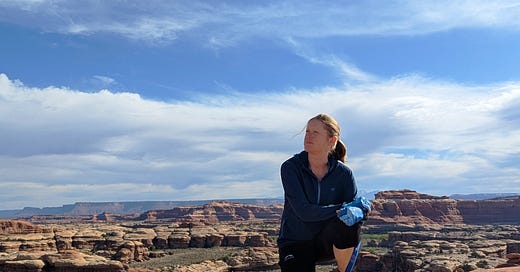



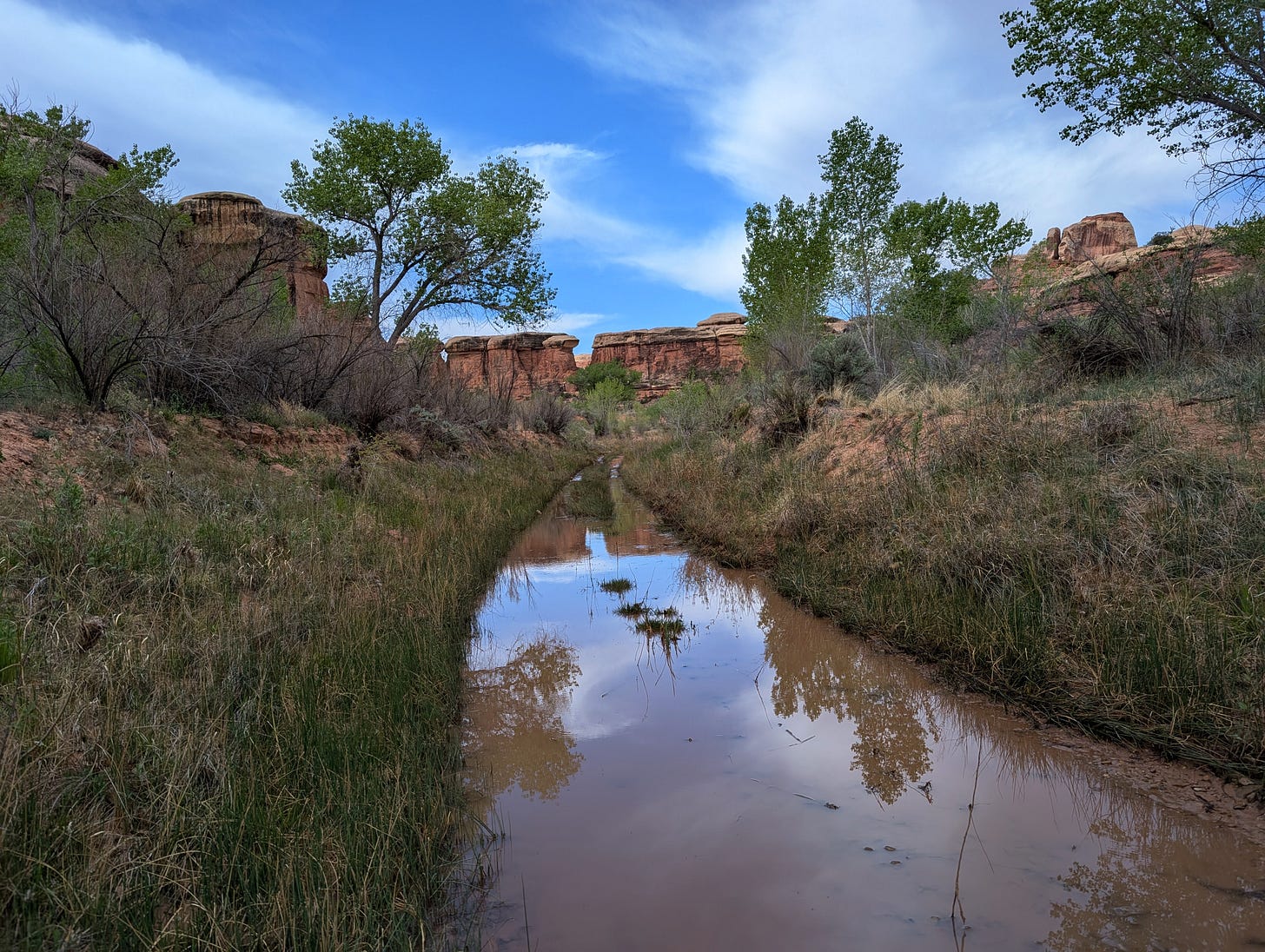
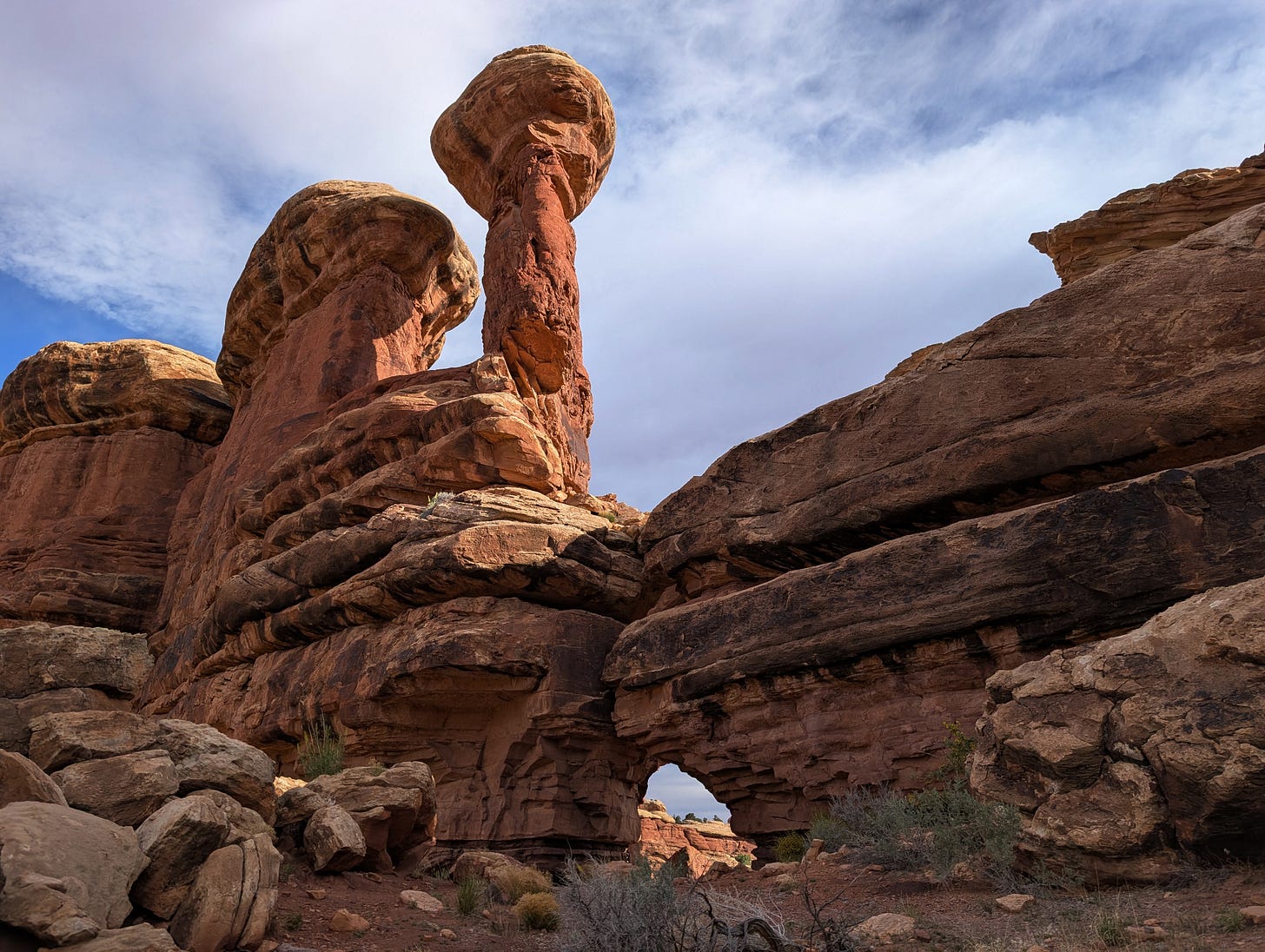
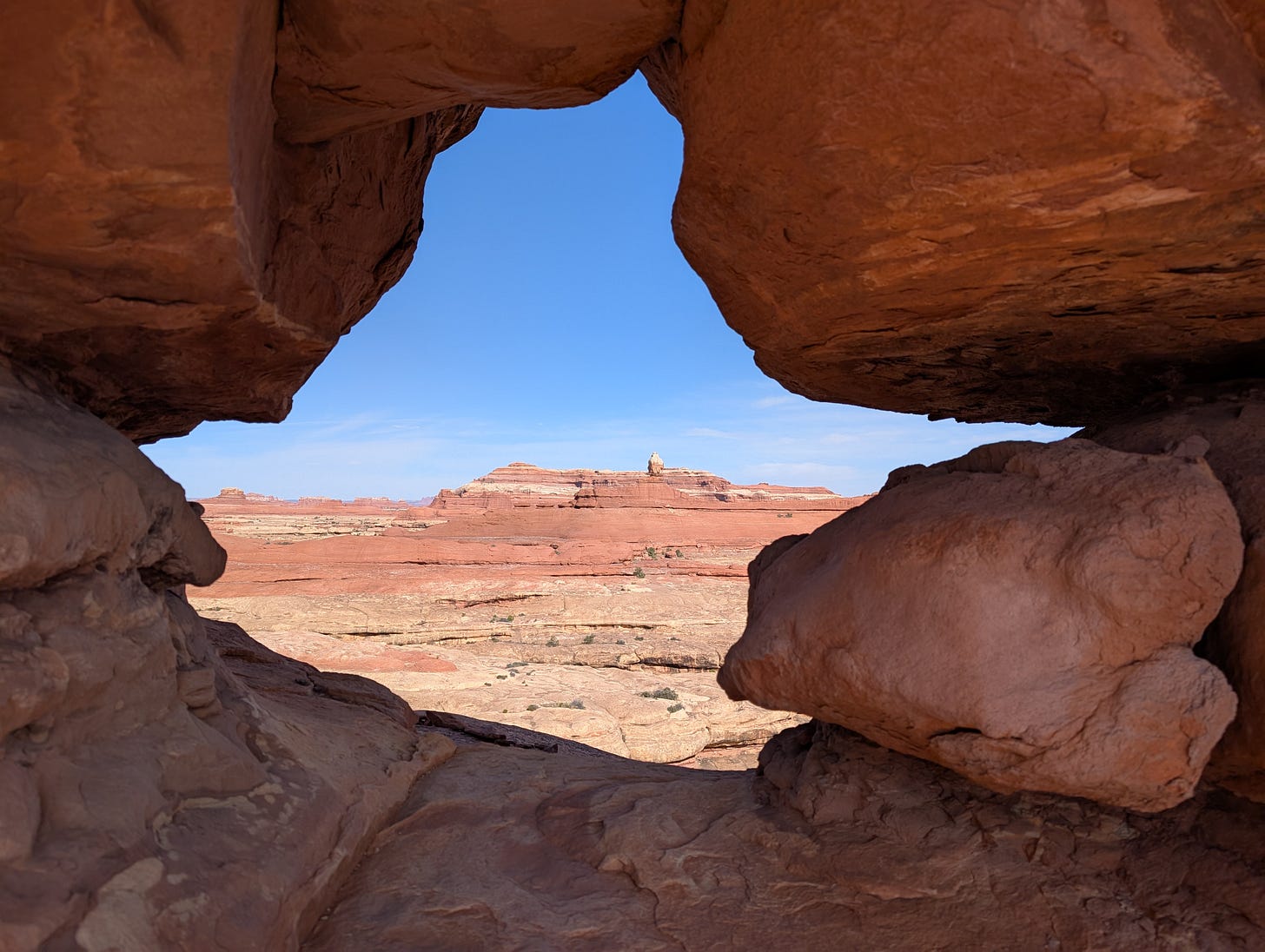
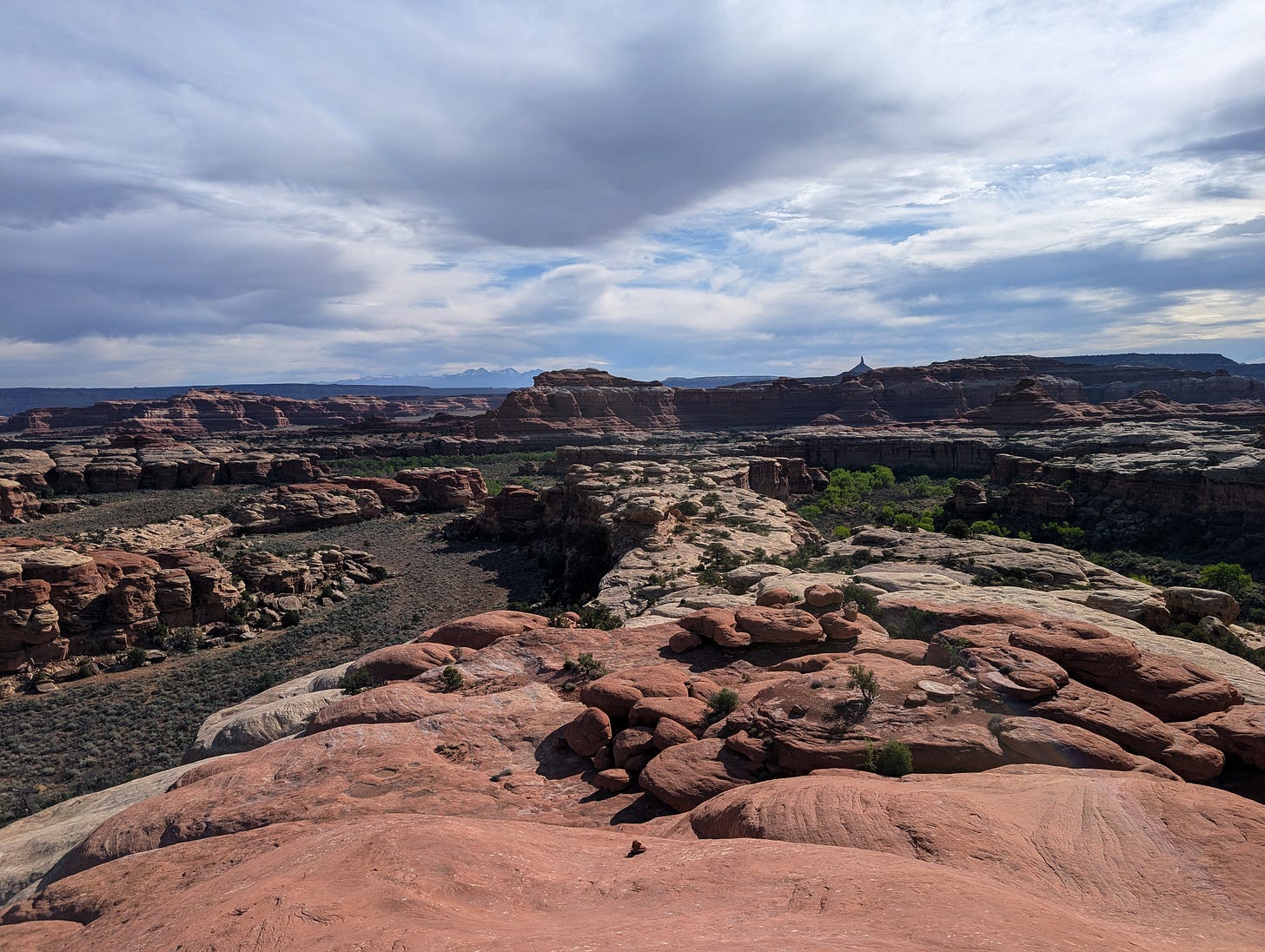
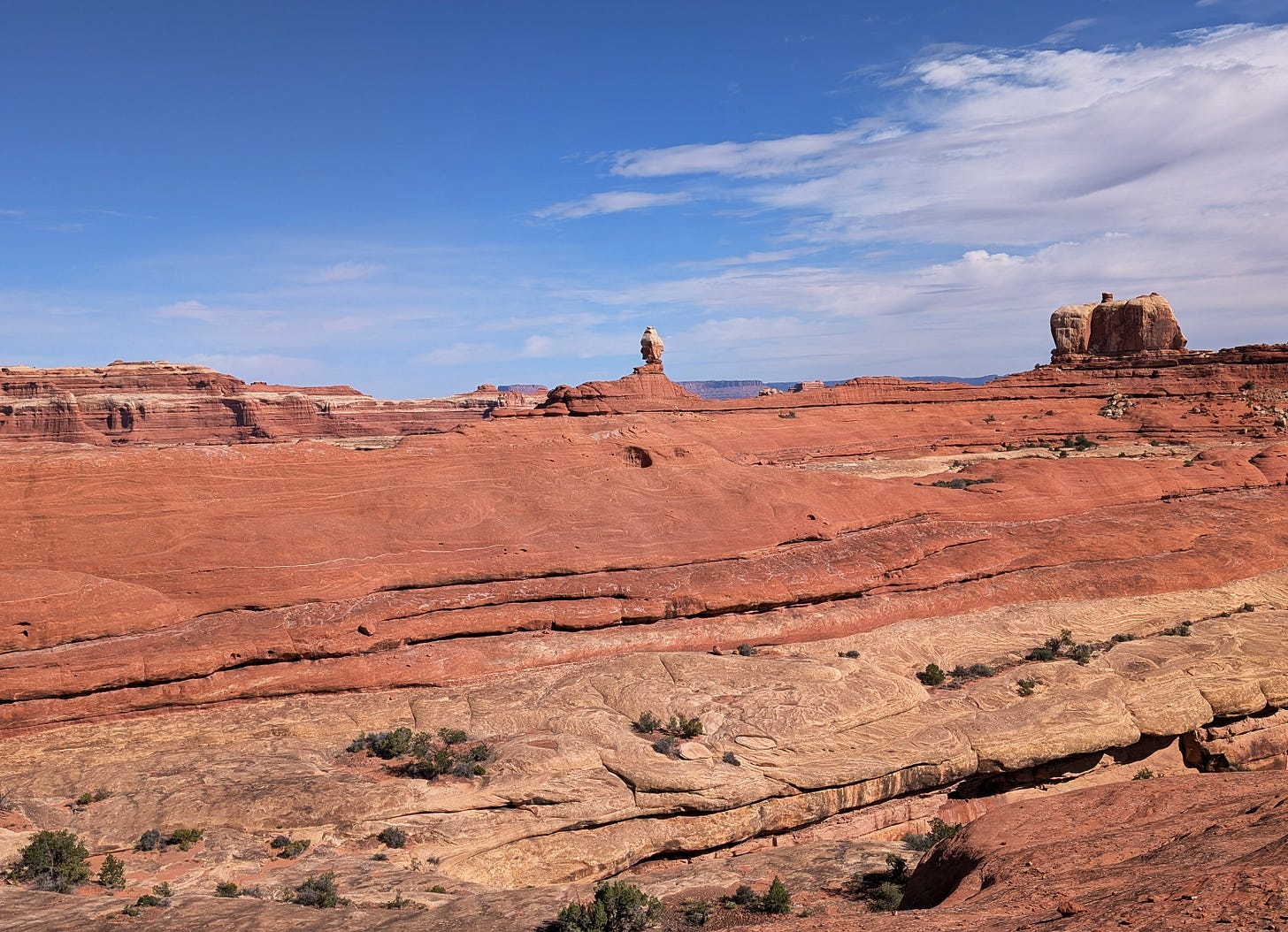
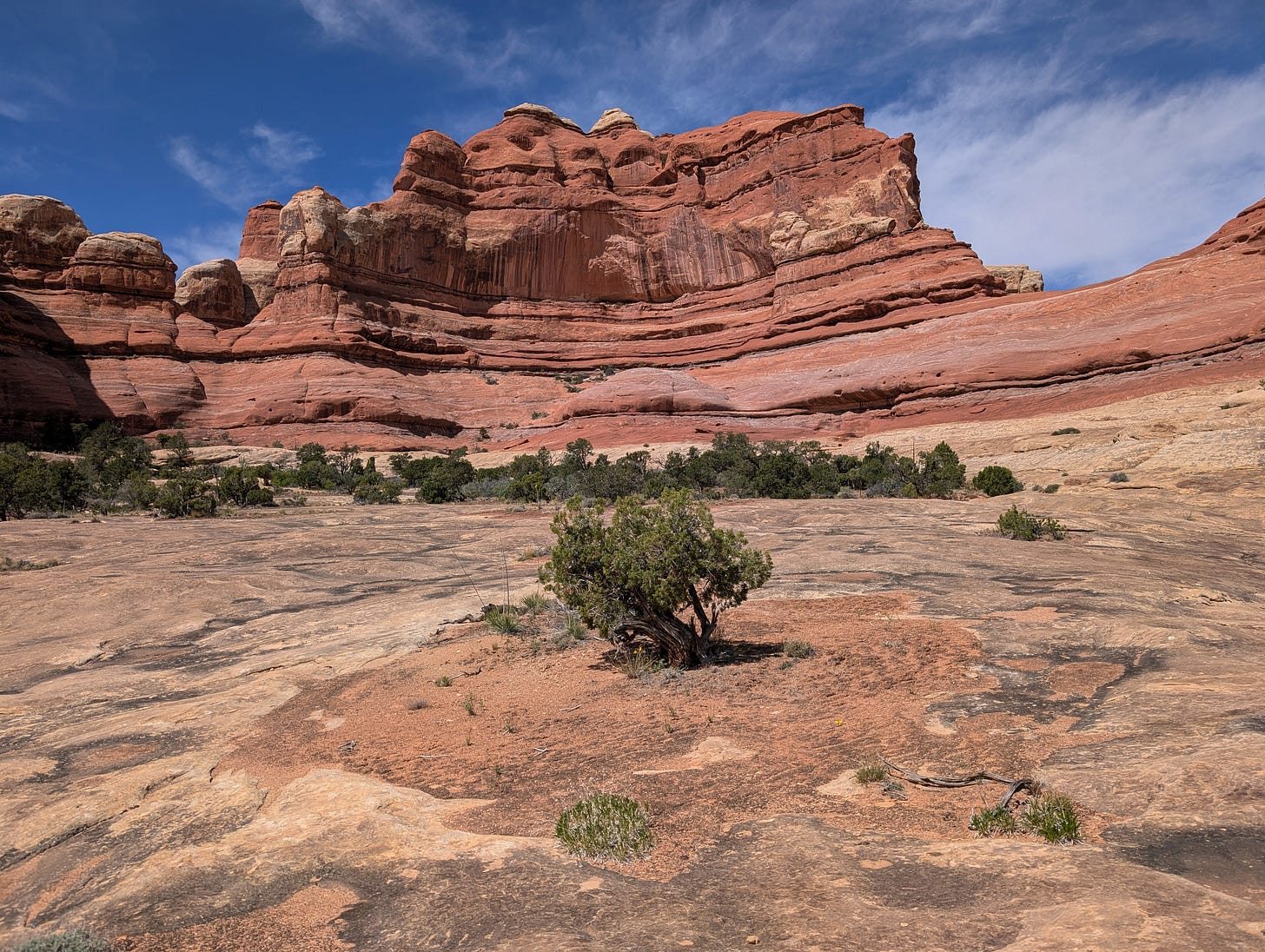
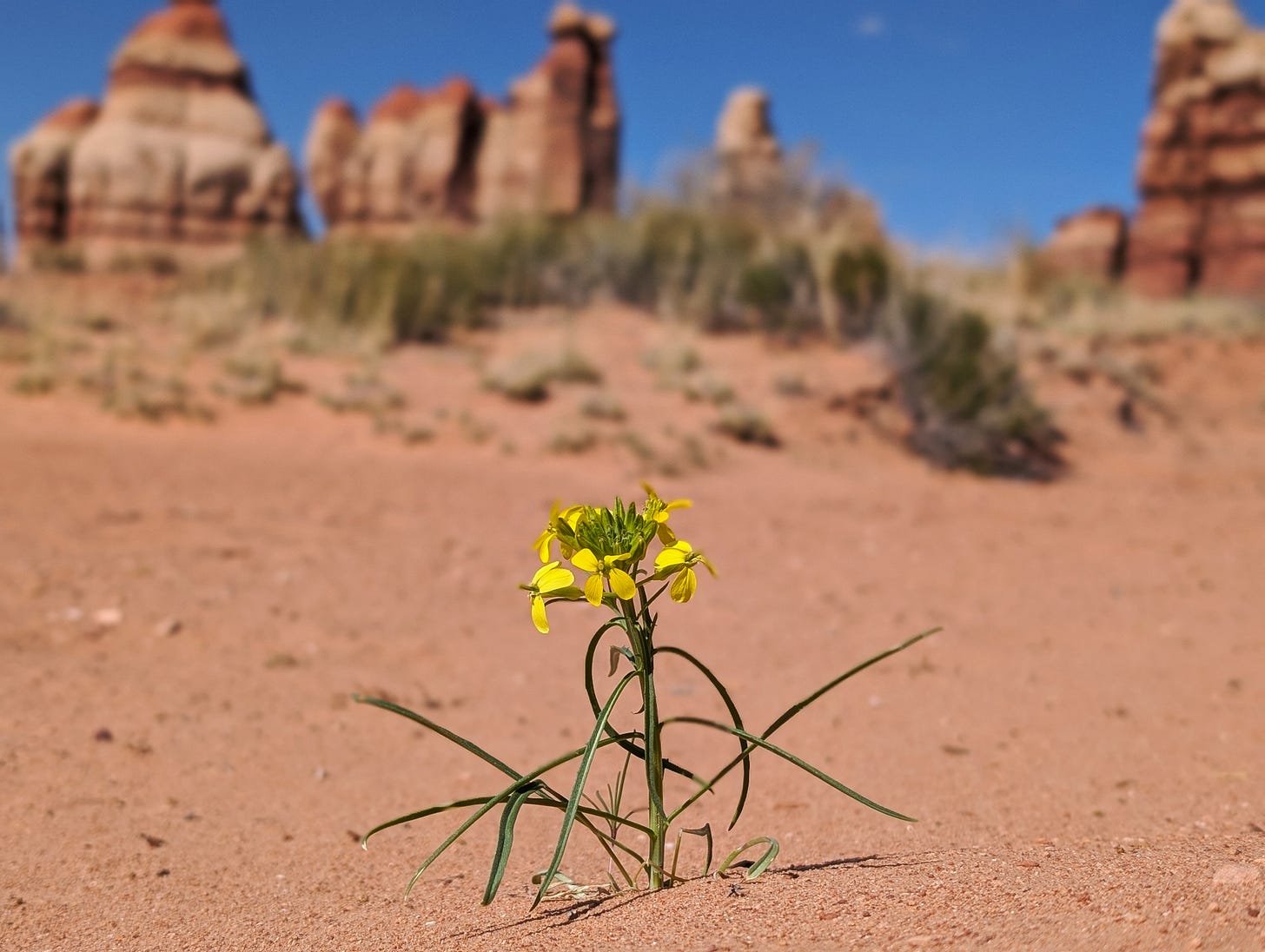
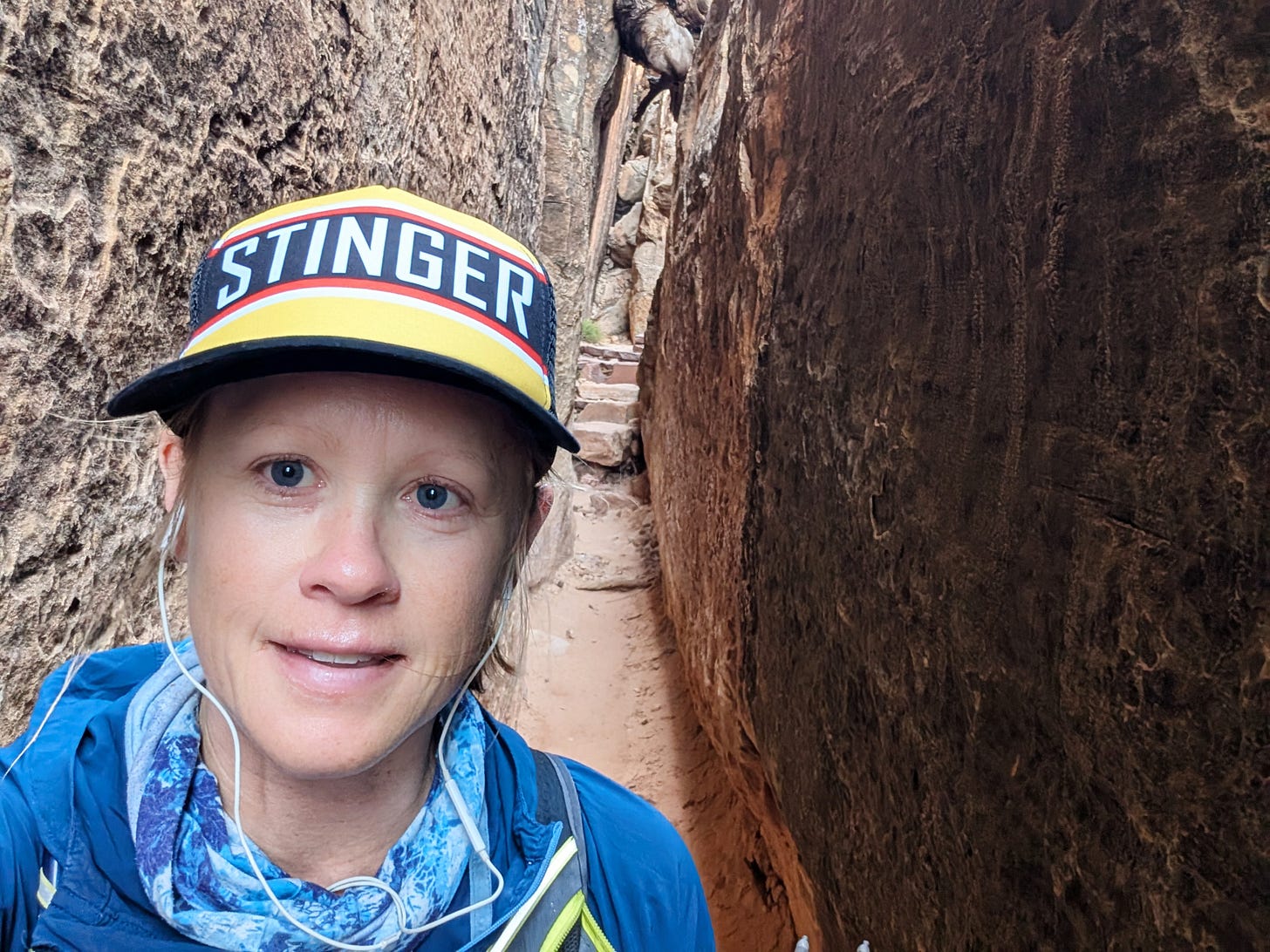
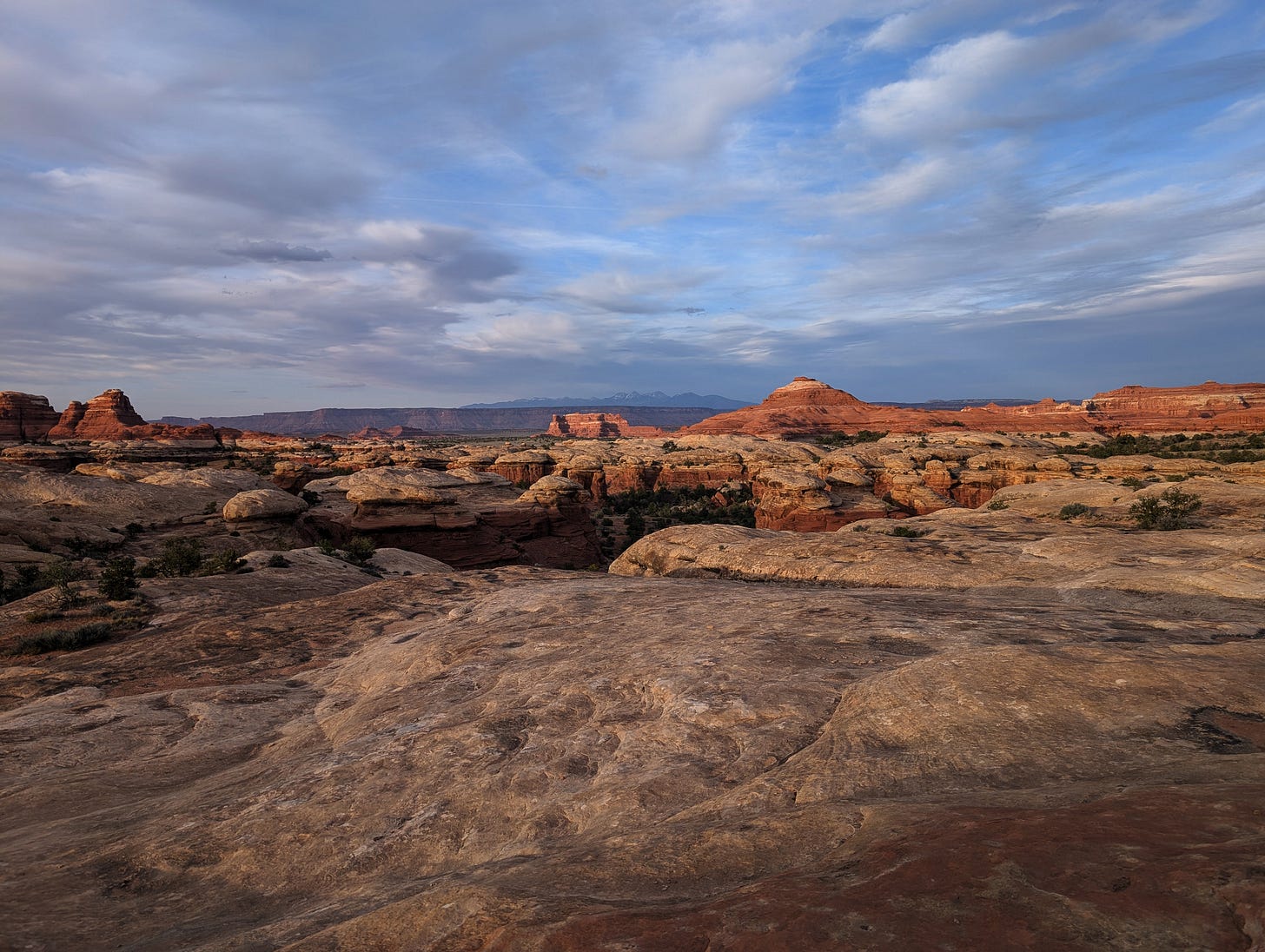
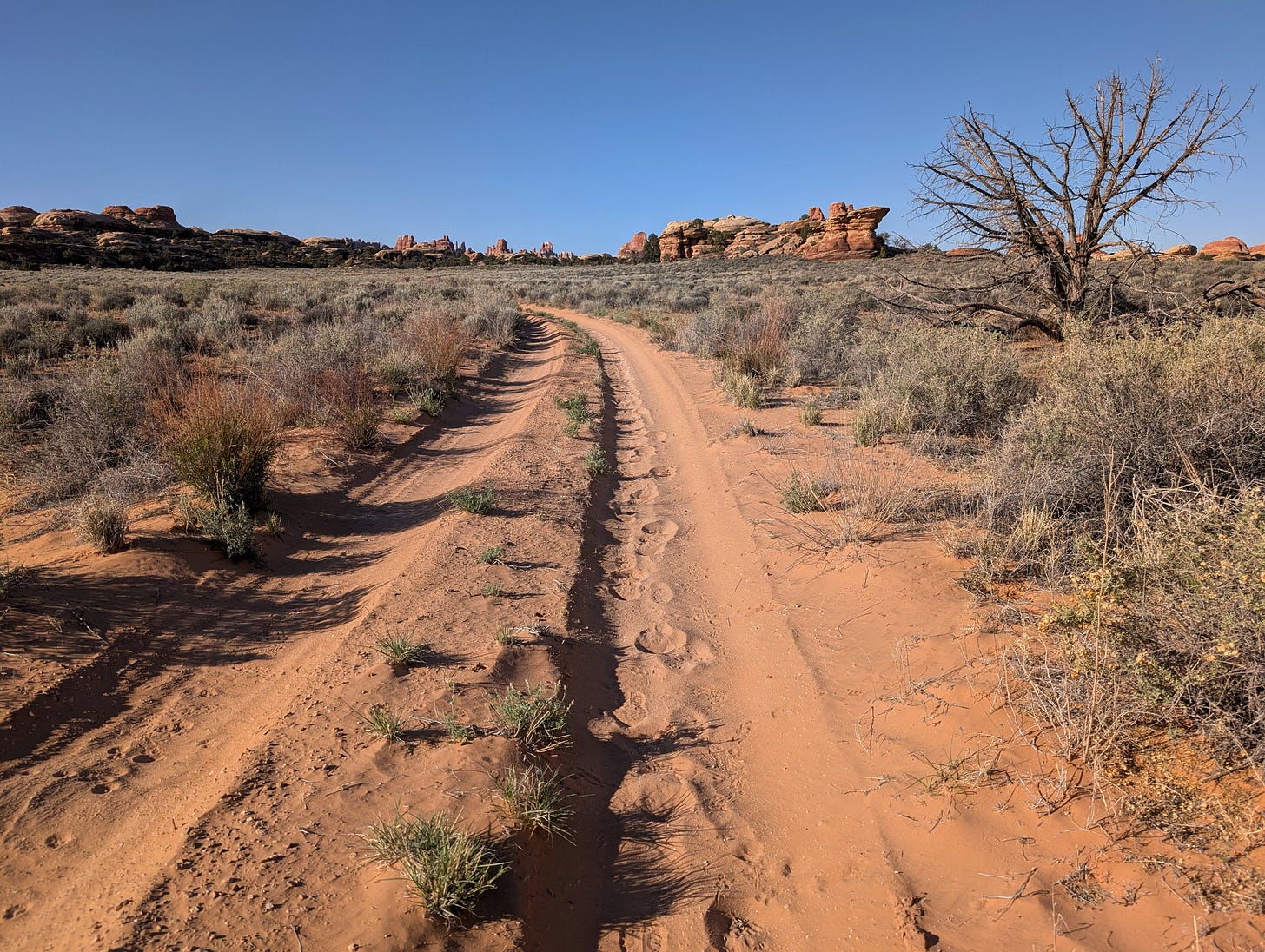
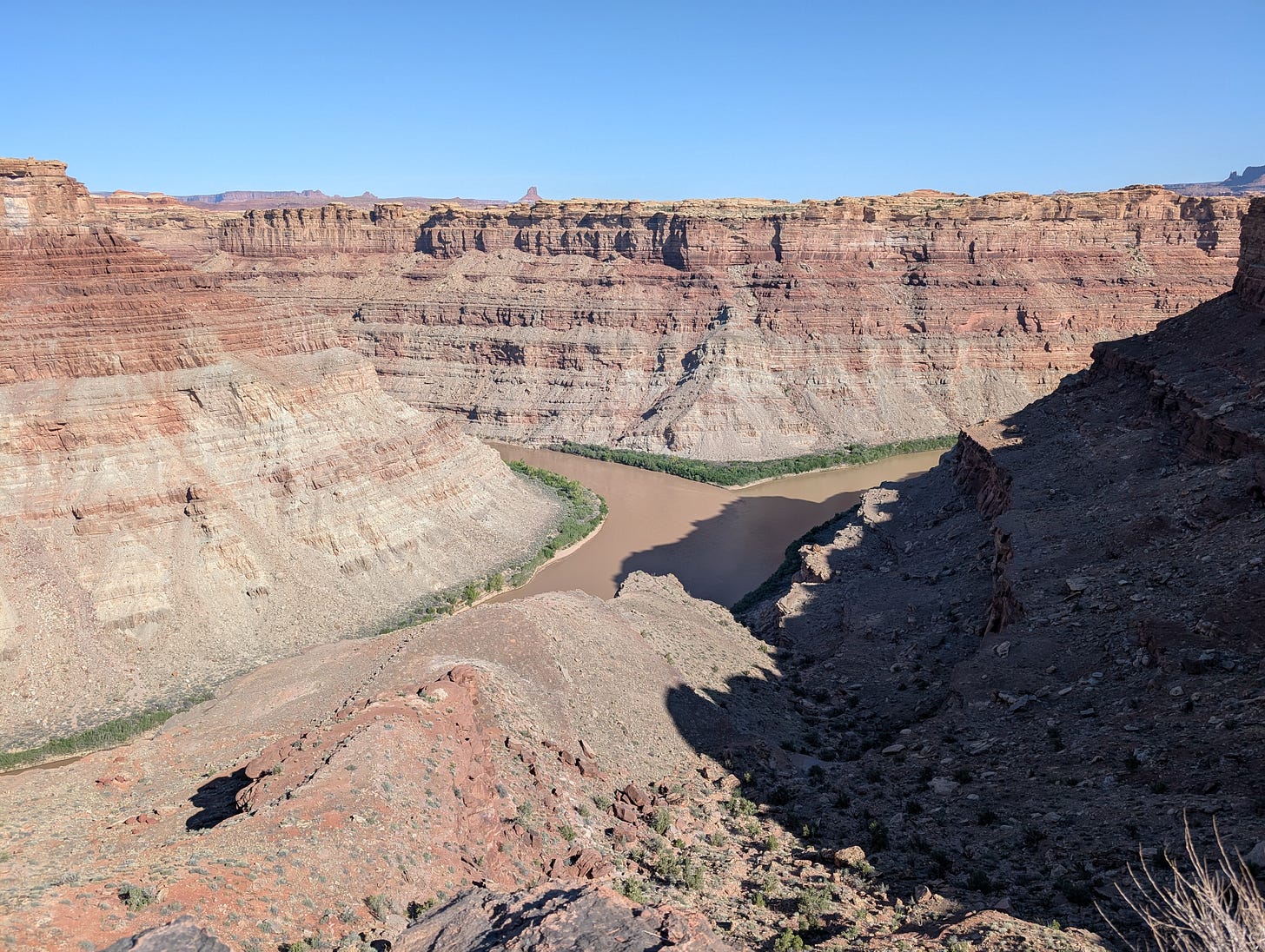

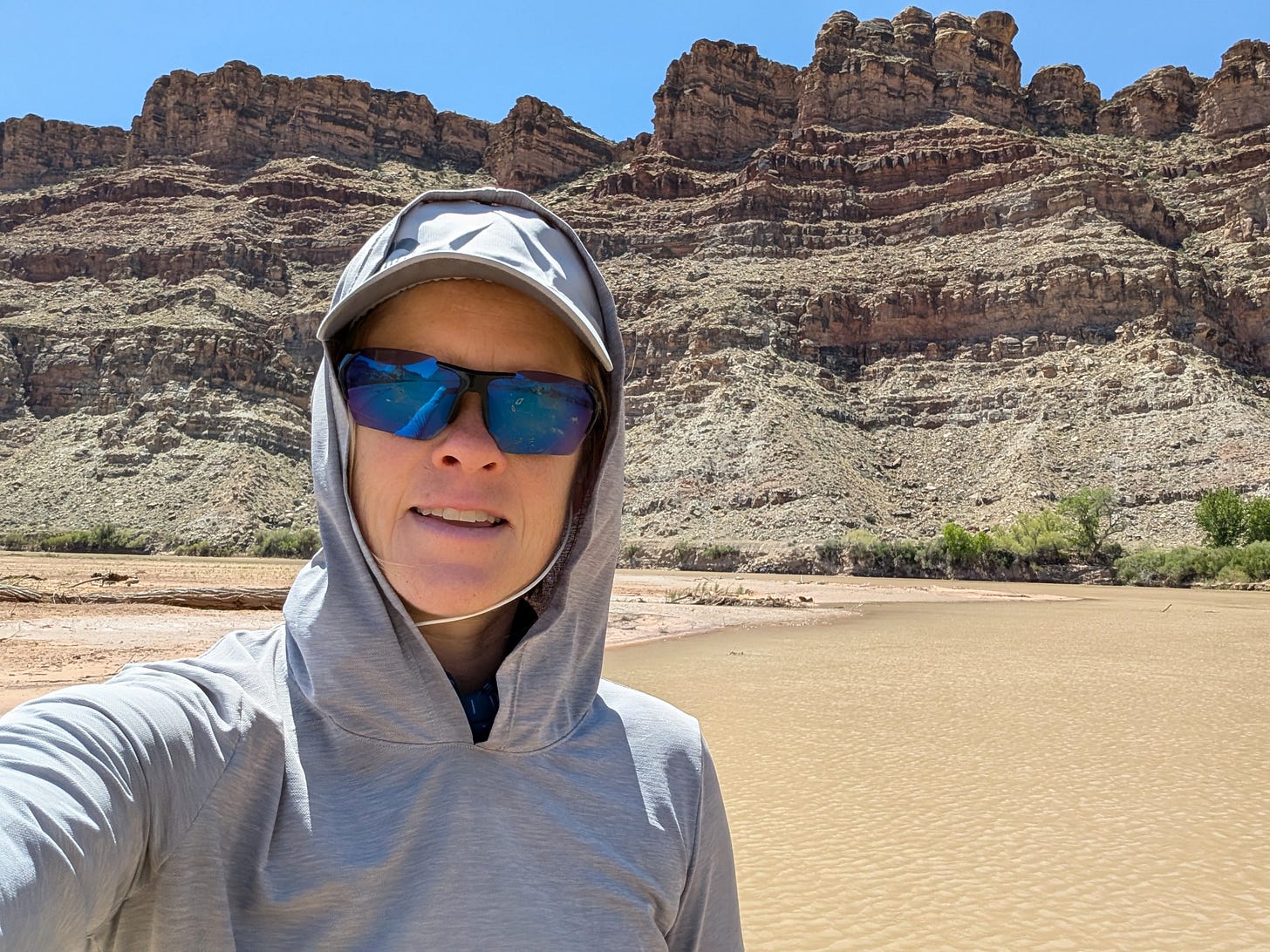
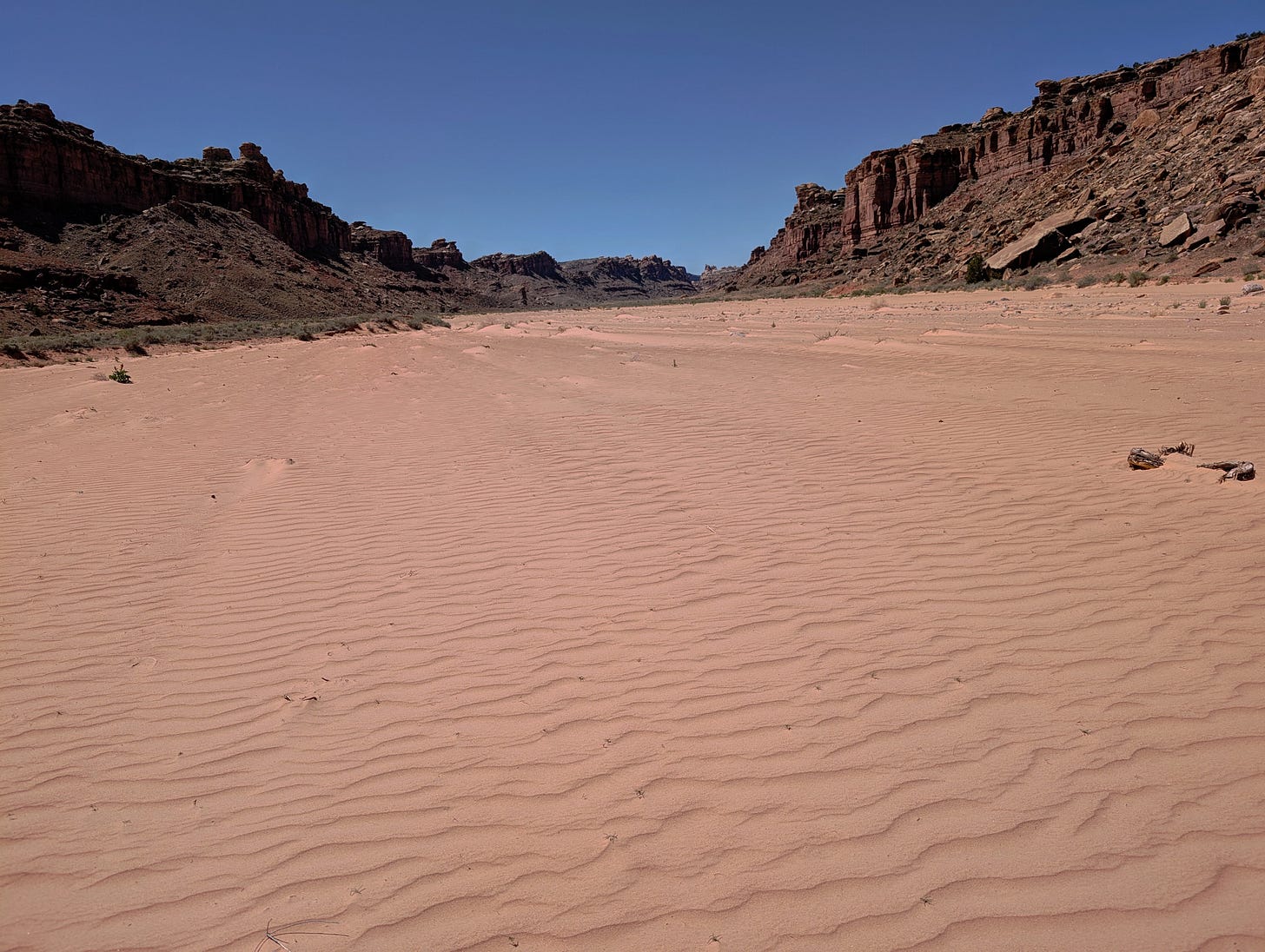
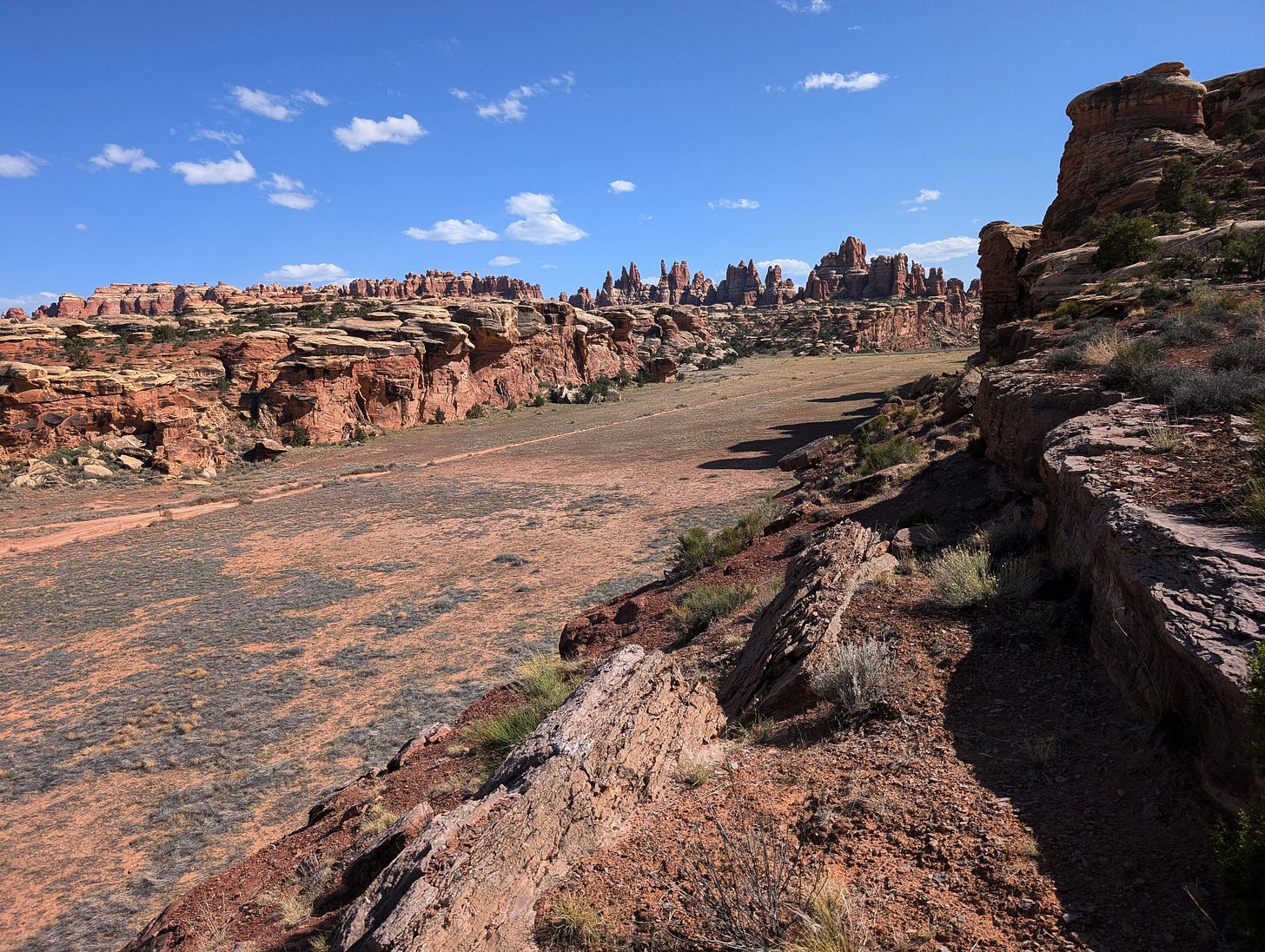
Thank you for sharing Jill. This was very moving and heartfelt.
Thank you for sharing so much of your soul with us. Your writing is mesmerizing.